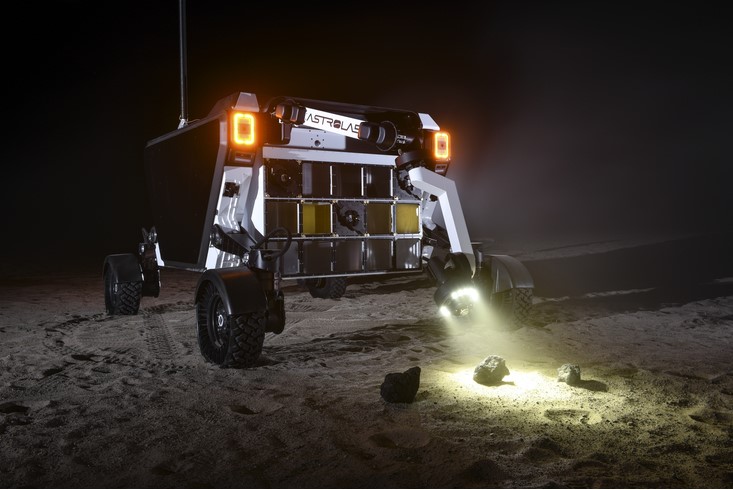Space Tech
SpaceX will take new
Rover to the moon
Astrolab’s FLEX is expected to be the largest and most capable rover ever to travel to the Moon.
The SpaceX mission to the Moon, due in mid-2026, will carry a special passenger: the Venturi Astrolab’s Flexible Logistics and Exploration (FLEX) rover.
SpaceX will use the Starship launch and landing system for this mission.
Upon completion of this mission, Astrolab’s FLEX will become the largest and most capable rover to ever travel to the Moon. With a maximum combined rover and cargo mass of more than two tons, the FLEX rover is nearly three times the mass of its largest predecessor. This increased capacity provides significantly more opportunities to conduct scientific experiments and commercial endeavors on the lunar surface.
Historically, planetary rovers have been custom-designed for each specific mission. These missions typically have occurred around once every ten years. But, with a rapid increase in launches, along with the significant increases in payload capacity of launch vehicles, this bespoke approach to rover design is no longer practical or efficient.
As a result, Astrolab designed the FLEX rover to transport and deploy payloads in a modular system. Astrolab says it seeks to prove the benefits of having a highly capable and versatile rover to establish infrastructure, conduct high-priority science, and deploy technology demos and other specialised systems on the lunar surface.
“Our Astrolab team has created much more than a rover for use on the Moon or Mars,” says Jaret Matthews, founder and CEO of Astrolab. “We’ve created a logistics system that can accommodate a wide variety of cargo. We expect that this approach will help establish a permanent lunar outpost on the Moon at a lower cost and in less time than previously envisioned.”
Tom Ochinero, senior VP for commercial business at SpaceX, says: “Starship is designed to transport large amounts of cargo, including rovers, to the Moon and Mars for research and exploration. Developing sustainable outposts will require lunar logistics and transportation on the surface of the Moon.”
Astrolab designed the vehicle to serve, further, as an unpressurised rover for a crew of two astronauts on the lunar surface. This design is compatible with NASA’s requirements for its Lunar Terrain Vehicle (LTV).
Asrolab said in a statement: “FLEX is more than just a concept. Last year, the Astrolab team began testing a full-scale, fully-functional terrestrial prototype of the FLEX rover in the California desert. Tests included both crewed and telerobotic operations, deployment of a variety of large payloads, science operations with its robotic arm, and engineering testing of the rover’s mobility performance in challenging terrain. Testing has continued in lunar analog sites around California throughout 2022 and into this year.”
* For more information, visit: astrolab.space.









